Not My Vagina
By Meera Seshadri
“And then there’s the African American moan.” Something prickled under my skin as I sat there in the dark, watching the young White female performer reposition herself on all fours and slap the stage yelling “oh S*** oh S***.” She was unbelievably brave – captivating even – in her portrayal of the woman who loves to make vaginas happy in the Eve Ensler play “The Moaner.” But both her flushed energy and my flushed discomfort were palpable. I do not identify as an African American woman, and I believe any portrayal of an “Indian American moan” would have made me equally upset – but in a matter of seconds, an unsolicited stereotype had been ascribed to an entire group of people by a White woman who does not identity as a member of that group. My displeasure grew as she continued with the “WASP” moan, the “bisexual” moan, and the “semi-religious” moan (performed with Jewish leanings, at least in the version I attended.) How someone expresses his/her/zir emotion in the intimate moments of an orgasm is intensely personal; the result of an indeterminate amount of socio-environmental and cultural factors within which they are socialized to feel pleasure. Or maybe it’s not that nuanced at all, and the noises, body language, and words – or lack thereof – are entirely involuntary and spontaneous. Who is Eve Ensler to decide how all of the chosen and un-chosen identities of someone’s lived experiences will intersect at the moment of orgasm, and what form of expression that pleasure or displeasure will take based on just one of those labels? On the official V-Day website, the Monologues have supposedly “given a voice to women of all ages all over the world.” Not my vagina. That evening, as the moans of the Monologues dissolved into the claps of a well-deserved standing ovation, I wondered why I continue to masquerade my support as sisterhood – as if I would be wronging the movement to express my vagina’s disappointment.
In the many years I have spent in higher education, as both a student and professional staff person, my discomfort with the lack of nuanced, mindful perspective during the Monologues has remained consistent. Year after year, I find myself mortified that whenever conversations regarding the Monologues do arise, not once are the following questions presented: “How do minority women, women of color, lesbian, queer, bisexual, or trans women, foreign-national women, or even those who have a vagina but don’t identify as ‘woman’ engage with the Monologues?” “Do they feel that the plays resonate with their lived experiences?” For years, I have struggled with being caught in this catch-22: I dislike feeling compelled to offer this perspective simply because of the color of my skin, yet perhaps because of the color of my skin, this question is always at the tip of my tongue. In these conversations, there is rarely an acknowledgement of the lacuna of minority perspectives in the performances, and definitely no ideas offered on ways we can challenge and address this for our students. There is immense opportunity to broaden, stretch, and ignite young minds by sharing the contributions of alternate worldviews. Why then, are we doing them a huge disservice by allowing the Monologues to silence, assume, exclude, and ultimately speak for the perspectives of millions? How can students learn to be inclusive and intersectional with programming if they study, work, and play in environments where concerted efforts to do so by administrators, faculty, and staff is not the norm? We should be arming young adults with the tools necessary to define social justice as it relates to their communities – to their vaginas. But part of advocating for social justice is challenging whether social justice for oneself is also social justice for another. If not, we are entering dangerous territory as advocates and preventionists, inadvertently colonizing one another with an overarching brand of feminism that is not as relevant or empowering as it once was. How is Eve Ensler’s brand of feminism different than the patriarchy, misogyny, and cis-sexism we are fighting day in and day out worldwide V-Day and Eve Ensler are revered for creating a “culture of vaginas” where women and girls worldwide can celebrate, commiserate, and comment on their relationship with their vaginas – free of criticism. I believe therein lies the problem, that a White female feminist who started the advocacy through art V-Day movement in the mid 1990s is now opposed to receiving criticism from thousands of people who feel her art does not represent their vaginas. The inability to adapt, refresh, and play with art is a detriment to the social justice movement it was created to support – and a grave injustice to the communities it serves.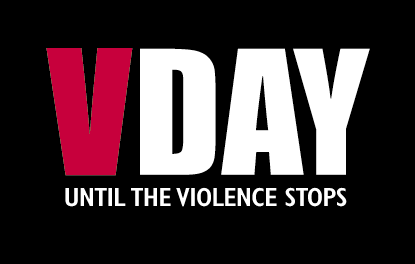 In the V-Day Organizer’s instruction booklet, it expressly dictates, “The new script must be followed. You may not edit any introductions or monologues. And you may not exclude or change the order of any of the monologues.” A set of beliefs that becomes so firmly institutionalized that it cannot be interpreted in a manner that is safe, healthy, and inclusive by the evolving communities it serves is then stale, and ineffective. We must ask ourselves, “Have we moved past the Monologues?”
In the V-Day Organizer’s instruction booklet, it expressly dictates, “The new script must be followed. You may not edit any introductions or monologues. And you may not exclude or change the order of any of the monologues.” A set of beliefs that becomes so firmly institutionalized that it cannot be interpreted in a manner that is safe, healthy, and inclusive by the evolving communities it serves is then stale, and ineffective. We must ask ourselves, “Have we moved past the Monologues?”
In the article “F’d by the Vagina Monologues,” Native American artist, scholar, and public speaker Lois Beardslee writes of how undermining and disingenuous it was to read the words that a white woman [Eve Ensler] had written to describe a Native woman’s experiences with interpersonal violence. Efforts to be inclusive of the Native American female voice of Traverse City, Michigan, were limited to soliciting scanned artwork from Beardslee for the Monologues’ program cover – not listening to the oral histories, cultural traditions, and socio-behavioral constructs that shape Native women’s relationships with their sexuality and employing that feedback in the play. Contrary to Beardslee’s oppressive experience with the Monologues was the evening I spent watching “Sliver of a Full Moon” at the U.S. Capitol on March 11, 2014, on the one-year anniversary of the Reauthorization of the Violence Against Women Act.  Written by playwright and citizen of the Cherokee Nation of Oklahoma Mary Kathryn Nagle, the play describes the groundbreaking work of five Native women and two Native men who fought to restore the authority of Native tribes over their non-Native abusers. Native women Billie Jo Rich and Lisa Brunner, whose personal stories of sexual assault, interpersonal violence, and rape were integral to advocating for the tribal jurisdiction provision, stood onstage and told their stories in their own words. “Strong hearts, to the front.” Their experiences were different than my own, their communities different than my own, but their words – their words united us in a shared struggle and a shared hope – their words burned in my blood. That night I stood and clapped, while mind, body, and soul danced madly in celebration.
Written by playwright and citizen of the Cherokee Nation of Oklahoma Mary Kathryn Nagle, the play describes the groundbreaking work of five Native women and two Native men who fought to restore the authority of Native tribes over their non-Native abusers. Native women Billie Jo Rich and Lisa Brunner, whose personal stories of sexual assault, interpersonal violence, and rape were integral to advocating for the tribal jurisdiction provision, stood onstage and told their stories in their own words. “Strong hearts, to the front.” Their experiences were different than my own, their communities different than my own, but their words – their words united us in a shared struggle and a shared hope – their words burned in my blood. That night I stood and clapped, while mind, body, and soul danced madly in celebration.
Aside from being culturally incompetent for a multitude of reasons, the Monologues are also exclusionary of individuals who do not identify as heterosexual and/or cisgender. The Western gender binary is glaringly apparent throughout Eve Ensler’s plays. Although having a vagina in some cultures is intimately tied to definitions of womanhood, other social and historical constructions of identifying as “woman” or “female” have nothing to do with biology. By excluding the experiences of intersex, women-born-men, and non cis-gender women from a movement that is meant to empower and unite, the Monologues also silence and marginalize the violence, harassment, and abuse experienced by these individuals. Critically rethinking Feminism so that it better speaks to the injustices a community is facing should be celebrated, not penalized. The last I checked, that’s what Eve Ensler’s V-Day movement aimed to do. Why has one woman’s revolution turned into another’s oppression? For students who adhere to the strict regulations that accompany the hosting of the Monologues however, where are we giving them the space to say, “Not my vagina”?
College campuses should be creating safe spaces where students can connect to a revolutionary movement like the Monologues, while simultaneously having the freedom to critique and challenge arbitrary mandates that label their sexual and physiological expression. The infrastructure afforded to us in a university setting means that much of the foundational work has already been created (ideally): complex and evolving social networks, institutional commitment to intellectual rigor, and an obligation to dismantle oppression and incorporate social justice into programming and resources. In the mid 1990s, Eve Ensler interviewed 200 women worldwide (how many of these were non-White? not specified) to inform her award-winning plays. I am confident that in 2014, interviewing only 200 “women” will no longer suffice to represent the stories of a population as diverse as college students. It is time to do something different. It is time to reclaim the movement and make it relevant, inclusive, and inspiring once again.
The first step is to assume responsibility as public health professionals and social justice advocates, creating space for students to deconstruct the Monologues. A well-planned campaign cannot be effective without a needs assessment à “Did you watch the Monologues?” “How did it make you feel?” “Do you identify with the language in the plays?” “Does it speak to your experience of ‘female’ or ‘womanhood’?” “What’s missing?” “What story would your vagina like to tell?” We can spark a cultural revolution by empowering students to be political about the identities they occupy, and inspiring them to write, produce, and direct the “Not my Vagina” Monologues.
Several adaptations to the Monologues have been created and performed in cities across the United States, and worldwide – ‘til date however, they have not had a platform to unite them in their individual critiques and adaptations, or a network of committed artists, activists, and advocates from which to draw support and resources. As professionals working in institutions of higher education, we can provide students with that unified platform, one that values qualitative research and evaluative feedback. We can stop passively allowing one White woman to write the stories that define and influence millions of non-White vaginas. We can invite and offer White-identified females the opportunity to reengage with the Monologues in a way they haven’t been able to do for decades – because their voices have been co-opted as well. What if we reenergized the movement by inspiring individuals of all ethnicities, identities, socializations and experiences to tell us what oppresses and liberates their vaginas? Their stories, in their words.
To assess and evaluate its relevance, the “Not my Vagina” Monologues should be performed alongside Eve’s VM, with safe spaces provided for students to process and deconstruct their engagement with both performances. Owning that female-specific spaces are supportive and necessary, I firmly believe that ending violence in communities worldwide is a collaborative revolution, and cannot be achieved at the exclusion of male-identified persons. They also experience abuse and violence, their masculinities marginalized and oppressed, their trajectories influenced and shaped by hegemonic patriarchy and hetero-hierarchy. Beyond inviting them to the Monologues, how are we making the movement accessible? The “Not My Vagina” Monologues would encourage male-identified persons to share their interactions with female sexuality and anatomy, challenging the damaging stereotypes they currently occupy in Eve’s VM. Revolutions are not started with the phrases “at least we were invited” or “we’re doing the best we can.” Vaginas need more than complacency.
We will not unite the world in preventing violence if one person tells the same stories each year, expecting new supporters. We as professionals, committed to creating communities free from the threat or fear of violence, need to present a new way forward. There are not many safe and supportive spaces beyond the collegiate gates where this nuanced, thoughtful approach to social justice work can be explored, wrestled with, and nurtured so boldly. The “Not My Vagina” Monologues is a first step in that direction – a new opportunity to engage with stories of oppression and celebration, an opportunity to hear these stories from people who have never before been asked. Every year, students learn the ins and outs of each play written by Eve Ensler, committing the language to both mind and body. How much more powerful would their performances be – how much more transformative their experiences – if the words were their own? The words of their friends, peers, partners, lovers, and family? We owe it to every person who has attended the Monologues year after year, standing and applauding as the curtains are drawn, all the while thinking, “Not my vagina.”
________________________________________________
 Meera Seshadri is a public health professional working at the intersection of sexual health promotion and sexual violence prevention. She has over eight years of experience in developing sexual health programming for adolescents and young adults in communities worldwide, applying population-level health promotion strategies and a social justice lens to the intersections of gender-based violence with other forms of oppression. Meera is committed to youth mentorship and engagement, systems reform and advocacy, and packaging health information in progressive, inventive ways. Although a Bay Area native (and fierce West Coast loyalist!), she has lived and worked extensively across the United States from Atlanta to Washington DC, and abroad in Japan, Nicaragua, the Philippines, and India. She holds a Masters of Science in Public Health (MSPH) in Health Communication and Adolescent Health and Development from Johns Hopkins University, and a Bachelor of Arts in Global Public Health and Dance. Meera is a lover of all things fantastical and unconventional, inspired by the romance of travel, food, dance, and the sea. Follow her on Twitter @MeeraSeshadri, and on her blog at www.beautyinthebreakdownblog.com
Meera Seshadri is a public health professional working at the intersection of sexual health promotion and sexual violence prevention. She has over eight years of experience in developing sexual health programming for adolescents and young adults in communities worldwide, applying population-level health promotion strategies and a social justice lens to the intersections of gender-based violence with other forms of oppression. Meera is committed to youth mentorship and engagement, systems reform and advocacy, and packaging health information in progressive, inventive ways. Although a Bay Area native (and fierce West Coast loyalist!), she has lived and worked extensively across the United States from Atlanta to Washington DC, and abroad in Japan, Nicaragua, the Philippines, and India. She holds a Masters of Science in Public Health (MSPH) in Health Communication and Adolescent Health and Development from Johns Hopkins University, and a Bachelor of Arts in Global Public Health and Dance. Meera is a lover of all things fantastical and unconventional, inspired by the romance of travel, food, dance, and the sea. Follow her on Twitter @MeeraSeshadri, and on her blog at www.beautyinthebreakdownblog.com

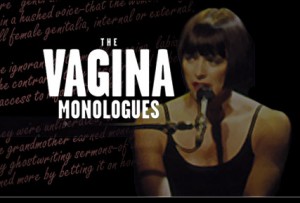
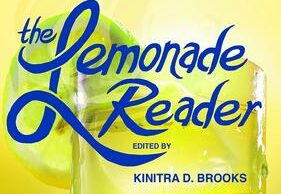
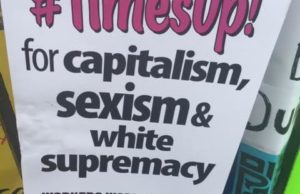
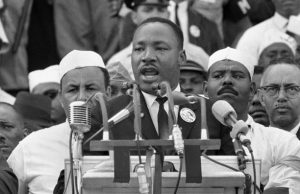
Pingback: Beyond the Beyond: Closing and Opening - The Feminist Wire | The Feminist Wire
Pingback: Critique and Beyond: The Draft as the Movement (A Postscript and a Prelude) - The Feminist Wire | The Feminist Wire